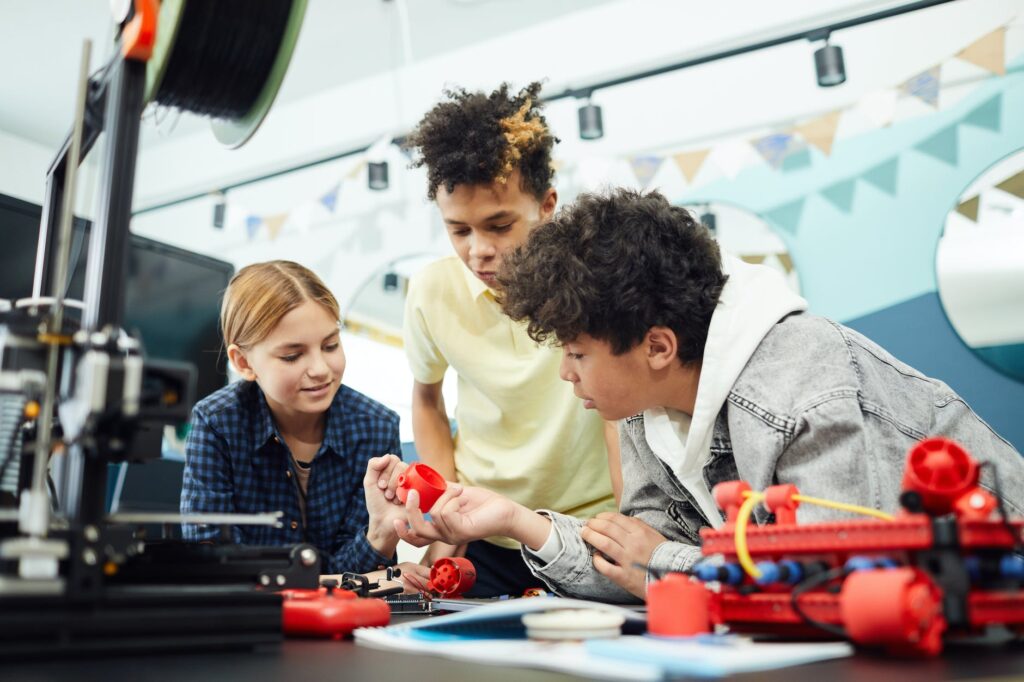In the recent blog post “Empowering Young Minds: SMART Goal Setting for Elementary School Students”, we explored easy ways to start goal-setting with your students. SMART goals are usually appropriate for long-term goals (quarter, semester, whole year) and they could be academic, social-emotional, behavioral, etc. What about goal-setting for a single assignment or a project? For these, consider GRASPS goal-setting which is the work of Grant Wiggins and Jay MgTighe.
What is GRASPS?
GRASPS is an acronym for Goal, Role, Audience, Situation, Product/Performance, and Standards of Success. It’s a framework that helps students set and achieve meaningful goals while working on projects. Here’s what each letter stands for:
- Goal: Start by explaining that a goal is something they want to accomplish, like learning a new skill, creating something exciting, or solving a problem.
- Role: Help students understand their role in achieving the goal. Are they artists, historians, writers, nutritionists, engineers?
- Audience: Discuss who will benefit from their project or goal. It could be their classmates, family, the entire school, or their community.
- Situation: Encourage students to think about the context of their goal. What’s happening in their school or community that makes this goal important?
- Product/Performance: Guide them in deciding what they’ll create or do to achieve their goal. Will it be a presentation, artwork, a storyboard, or a sculpture?
- Standards of Success: Discuss what success looks like. What criteria will they use to evaluate their work?
Click here to see for examples in math and social studies, and for ideas for roles and possible products or performance, and templates to adapt.
GRASPS fosters self-directed learning
- Start with a Story: Begin with a captivating story or a scenario that resonates with your students. For instance, if you’re teaching math, create a narrative where they’re superheroes solving math problems to save the day.
- Use Real-World Examples: Show your students real-world examples of GRASPS projects. Share stories of young inventors, artists, or scientists who achieved their goals through similar processes.
- Brainstorm Together: Engage your students in brainstorming sessions to explore their interests and passions. Help them find goals that align with their unique talents and curiosity.
- Collaboration is Key: Encourage collaboration by having students work in teams. This helps build a community of learners and foster 21st-century skill development. And makes learning more fun!
- Regular Progress Updates: Schedule regular check-ins to discuss their progress. Help students monitor and adapt their learning along the way. Celebrate their achievements and provide guidance when needed.
- Reflect and Revise: Teach students to reflect on their work and make revisions. This encourages self-direction and a growth mindset.
- Creative Community Showcases: Organize showcases where students can present their projects to peers, parents, or even the whole school. Students can share their work with local organizations or engage in projects that benefit the neighborhood. This lends authenticity as it makes their work applicable to real-life scenarios.
Start with a short assignment
By introducing GRASPS goal setting to your elementary school students, you’re not only teaching them to set and achieve goals effectively, but you’re also nurturing their creativity, critical thinking, and teamwork skills. Start with one short assignment, walk the students through GRASPS, set up the assignment and let them go. Afterwards, be sure to reflect on how it went. Don’t forget to ask your students for their thoughts on GRASPS!
Check out our “Self-Directed Learning Training” page for more information on this topic.

